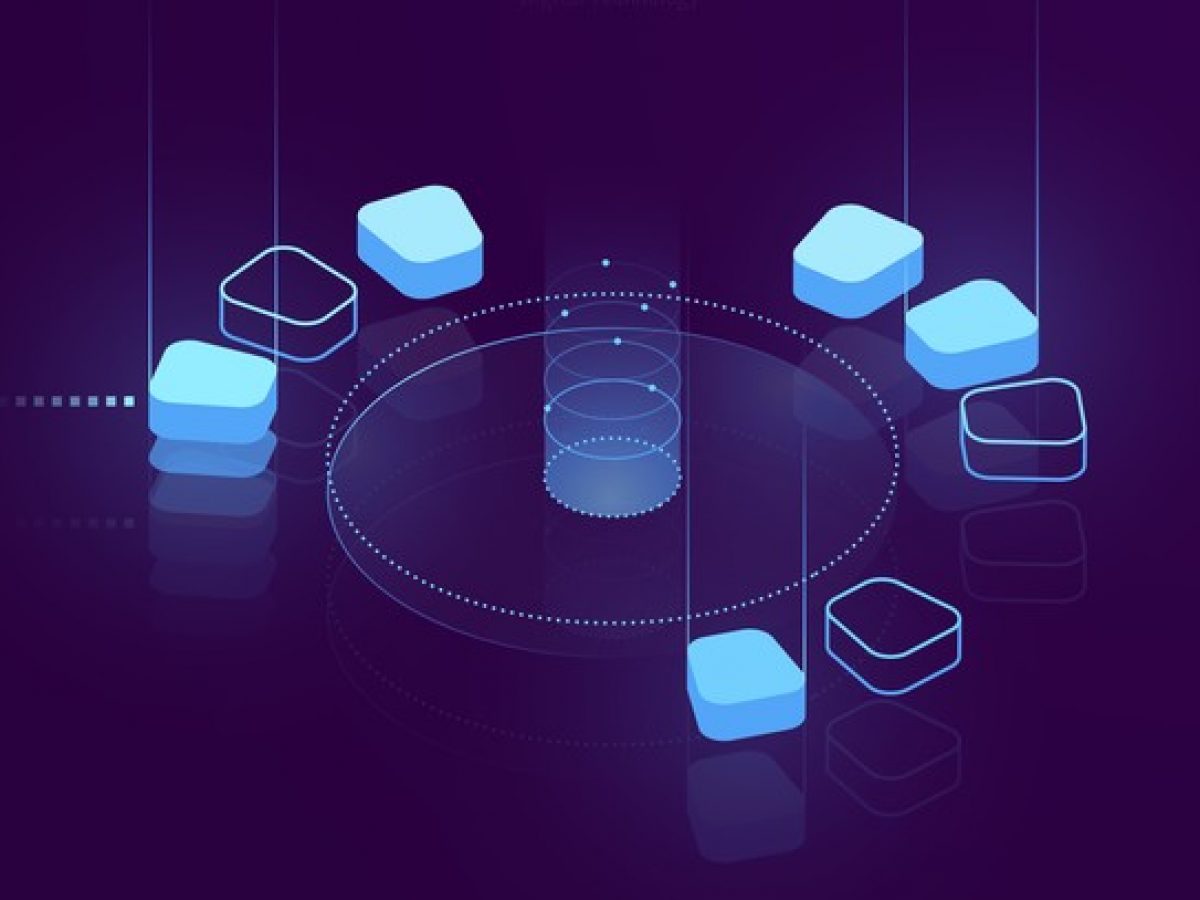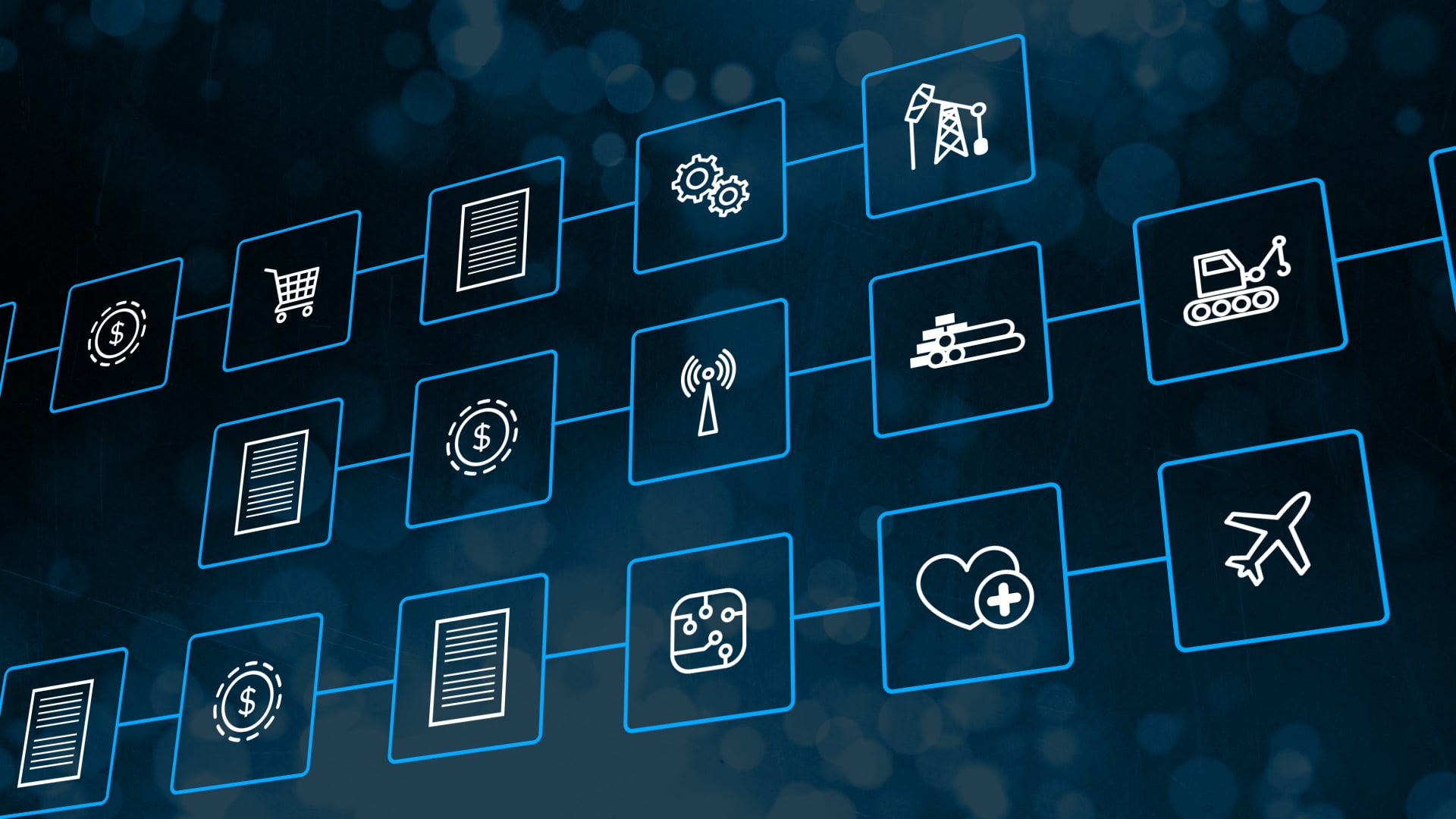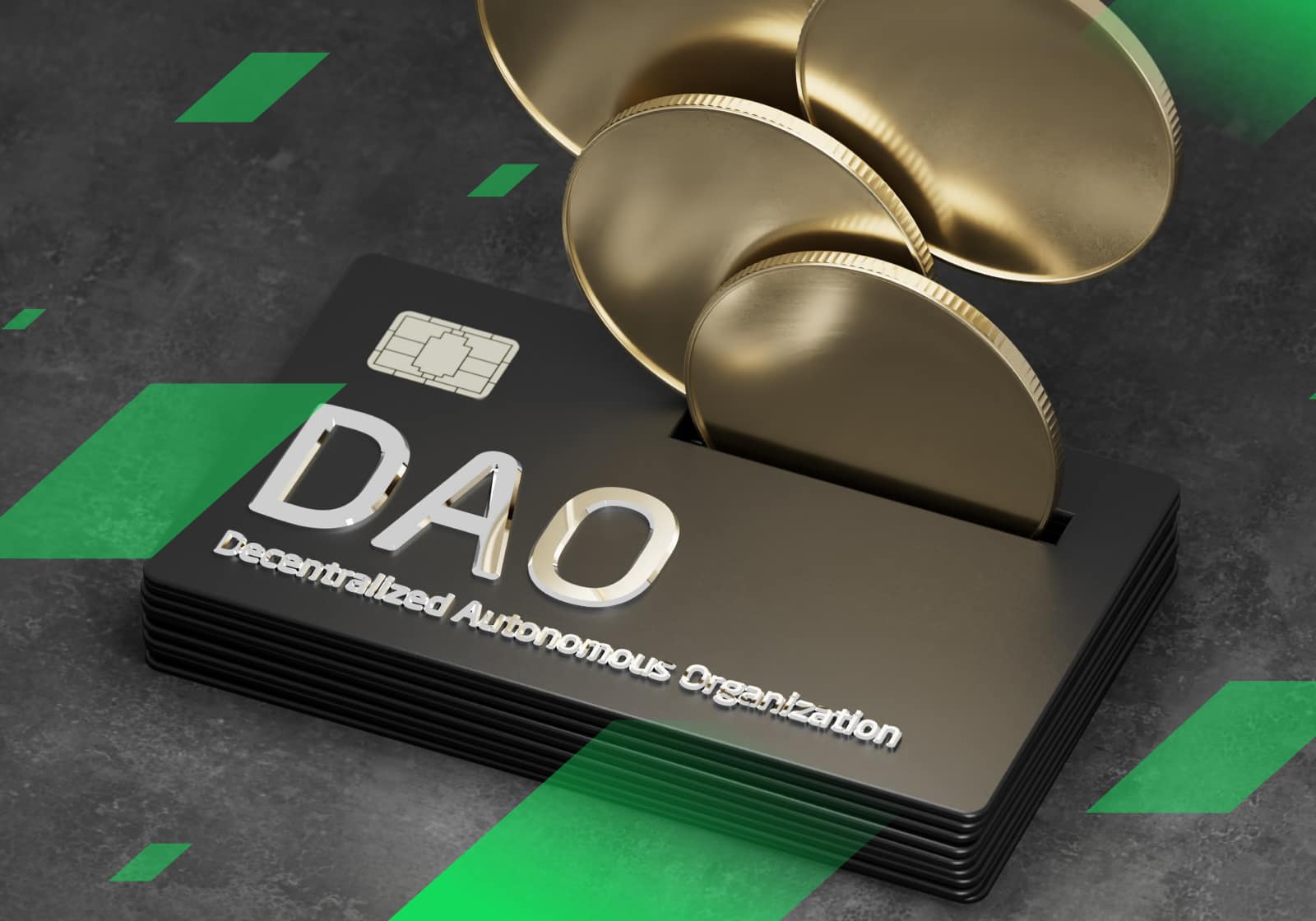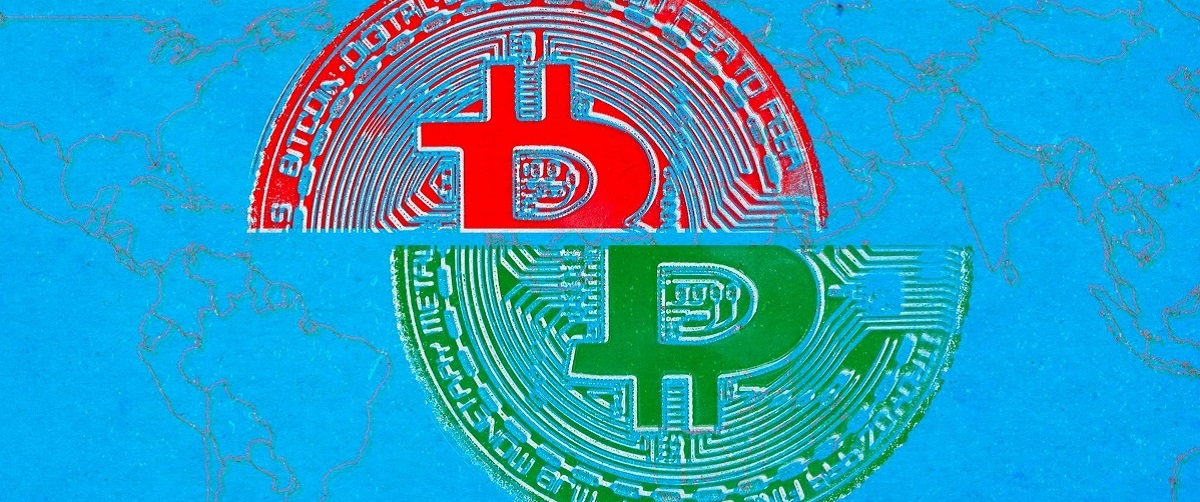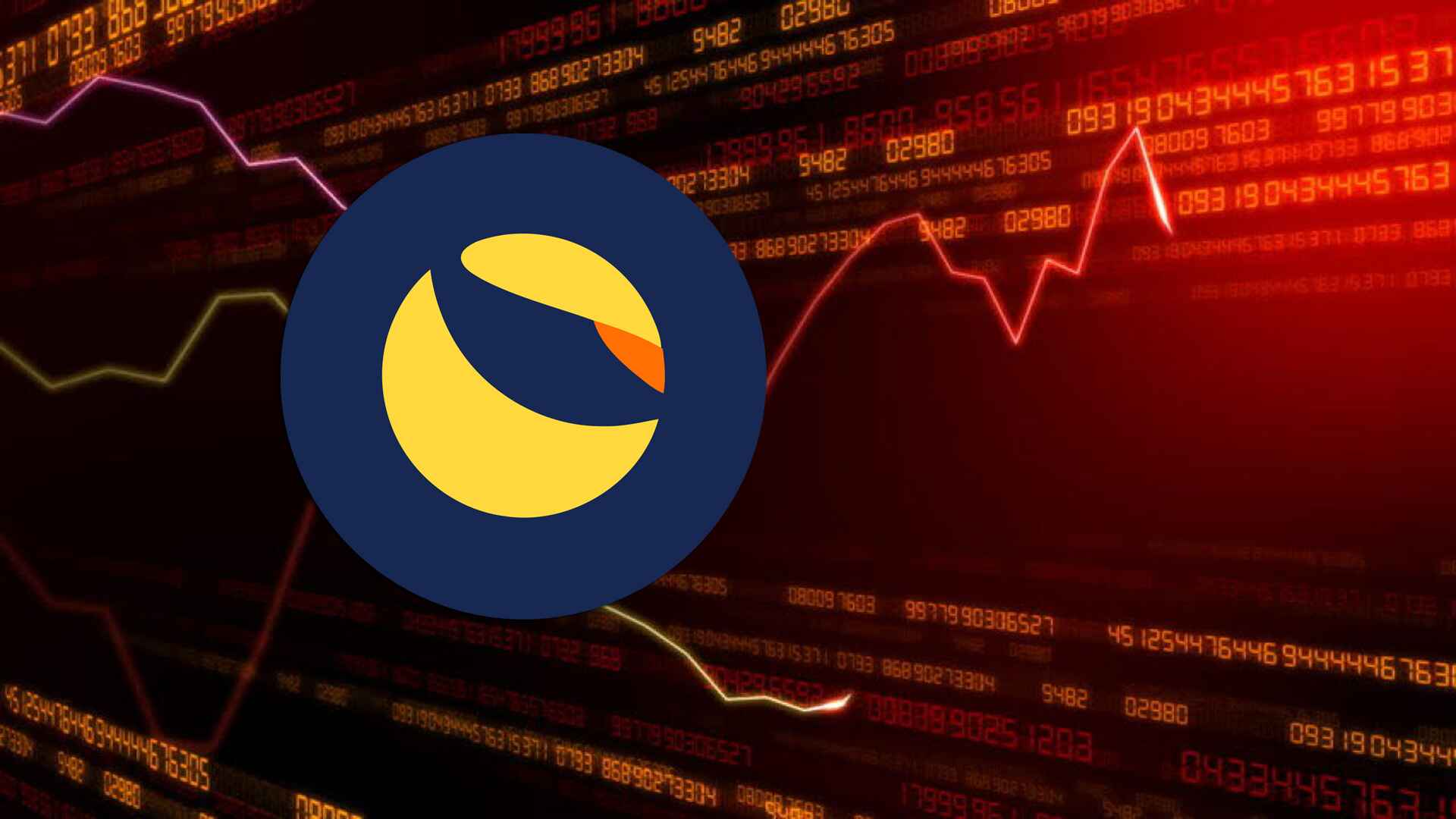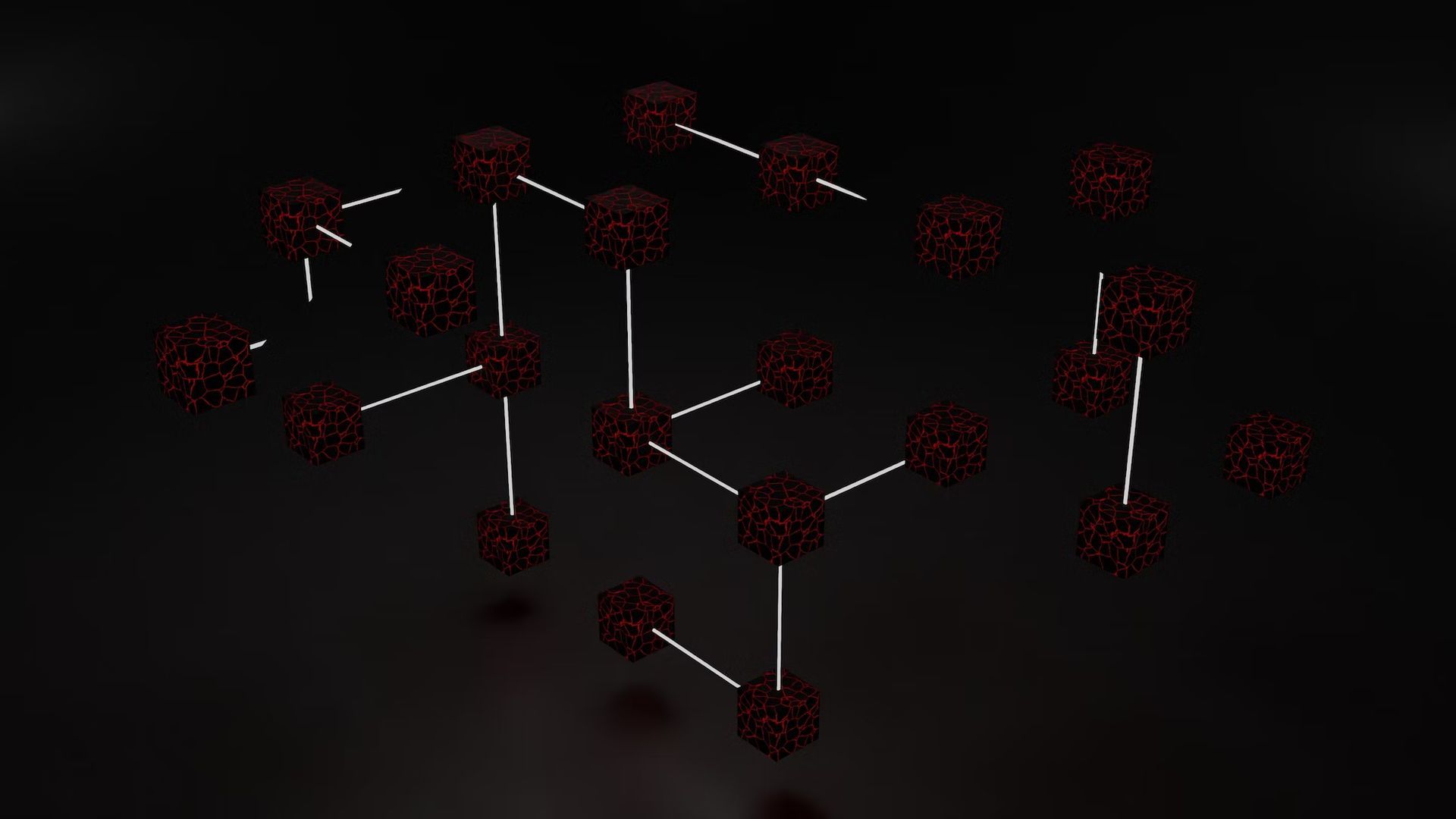Introduction
Welcome to the world of blockchain governance! In this digital era, the rise of blockchain technology has revolutionized various industries, including finance, supply chain management, and healthcare. As blockchain continues to gain momentum, it is crucial to understand the importance of effective governance in this decentralized ecosystem.
Blockchain governance refers to the mechanisms and processes put in place to manage and regulate blockchain networks. Unlike traditional centralized systems, blockchain networks are decentralized, meaning they are not controlled by a central authority. Instead, decision-making power is distributed among network participants.
The decentralized nature of blockchain requires a unique approach to governance. Without proper governance, blockchain networks may face challenges such as scalability issues, security vulnerabilities, and conflicts of interest. Therefore, it is essential to have robust governance frameworks that balance decentralization, security, and efficiency.
Blockchain governance encompasses various aspects, including decision-making, network upgrades, protocol changes, and community participation. It involves stakeholders such as developers, miners, users, and validators working together to ensure the smooth operation and evolution of the blockchain network.
In this article, we will explore the key elements of blockchain governance, the role of consensus mechanisms, different governance models, challenges and considerations, best practices, and examples of successful blockchain governance. By delving into these topics, we aim to provide a comprehensive understanding of how blockchain networks are governed and how decentralized decision-making contributes to their long-term success.
So, let’s dive deeper into the fascinating world of blockchain governance and unravel the complexities that lie within!
What is Blockchain Governance?
Blockchain governance refers to the processes and mechanisms through which blockchain networks are managed, operated, and regulated. It is a crucial aspect of blockchain technology that ensures the smooth functioning and evolution of decentralized networks.
In traditional centralized systems, governance is typically handled by a central authority or governing body. However, in blockchain networks, governance is distributed among network participants, often referred to as nodes or validators. These participants collectively make decisions that impact the blockchain’s rules, protocols, and overall operation.
At its core, blockchain governance aims to address the following key aspects:
- Decision-making: Blockchain governance involves defining the decision-making process within the network. It determines how proposals for changes or upgrades to the blockchain are evaluated and approved, and how conflicts or disagreements are resolved.
- Rules and protocols: Governance frameworks establish the rules, protocols, and standards that govern the behavior of network participants. This includes defining consensus mechanisms, transaction validation procedures, and rules for block creation and addition to the blockchain.
- Community participation: Active participation of the blockchain community is essential for effective governance. This includes engaging developers, miners, users, and other stakeholders in decision-making processes, fostering collaboration, and maintaining a transparent and inclusive environment.
- Network upgrades: Governance frameworks outline the procedures and protocols for implementing upgrades and changes to the blockchain network. This includes proposing and implementing protocol upgrades, addressing scalability issues, introducing new features, and ensuring the seamless integration of new technologies.
- Security and consensus: Governance mechanisms play a crucial role in maintaining the security and consensus of the blockchain network. They define the consensus algorithm, determine how transactions are validated, and set rules for preventing attacks such as double-spending or Sybil attacks.
Overall, blockchain governance serves as a roadmap for managing the decentralized nature of blockchain networks. It aims to strike a balance between maintaining network security and stability, fostering innovation and growth, and ensuring the inclusion and representation of all stakeholders.
Next, let’s explore the importance of blockchain governance and how it contributes to the success and sustainability of blockchain networks.
The Importance of Blockchain Governance
Blockchain governance plays a critical role in the success and sustainability of blockchain networks. It ensures that these decentralized ecosystems operate transparently, efficiently, and securely while fostering innovation and trust among participants. Let’s delve into why blockchain governance is so important.
1. Trust and Transparency: Blockchain governance frameworks establish clear rules and protocols that govern the behavior of network participants. This transparency fosters trust as users can verify transactions and network activity independently. Transparent governance also ensures fair decision-making processes, making it more difficult for any individual or entity to control the network for personal gain.
2. Network Security: Governance mechanisms are critical for maintaining the security of blockchain networks. This includes defining consensus algorithms and validating transactions. Well-designed governance frameworks can prevent attacks, such as double-spending or Sybil attacks, and ensure the integrity of the blockchain’s data. Effective governance enhances the network’s resilience and safeguards user assets.
3. Consensus Formation: Blockchain governance outlines the process of achieving consensus among network participants. Consensus mechanisms, such as proof of work or proof of stake, ensure agreement on transaction validity, preventing the possibility of fraudulent activities. By establishing consensus, governance enables the decentralized nature of blockchain, eliminating the need for a central authority.
4. Scalability and Network Upgrades: As blockchain networks grow, governance becomes crucial for addressing scalability challenges. Proper governance frameworks allow for efficient decision-making on network upgrades and improvements. This includes implementing changes to the protocol, introducing new features, and addressing scalability issues while ensuring the backward compatibility of existing applications.
5. Community Participation and Collaboration: Governance frameworks encourage active participation from community members, including developers, miners, and users. By actively involving stakeholders in decision-making processes, governance ensures that diverse perspectives are considered. This inclusivity enables collaboration, fosters innovation, and creates an environment where all participants can contribute to the growth and development of the network.
6. Regulatory Compliance: Blockchain governance has become increasingly important in addressing regulatory considerations. As blockchain technology matures, governments and regulatory bodies are looking to ensure compliance within this innovative ecosystem. Effective governance frameworks enable the development of compliant practices, facilitating the integration of blockchain technology into existing regulatory frameworks.
7. Sustainability and Long-term Viability: Well-established governance frameworks are crucial for the long-term viability and sustainability of blockchain networks. By setting clear rules and processes, governance promotes stability and ensures the network’s evolution aligns with the changing needs of participants and technology advances. This facilitates the adoption of blockchain technology by enterprise and individual users, contributing to the overall growth of the ecosystem.
In essence, blockchain governance is essential to establish trust, maintain security, foster collaboration, and ensure the long-term viability of decentralized networks. By implementing effective governance mechanisms, blockchain ecosystems can thrive and revolutionize various industries by providing secure and transparent solutions.
Key Elements of Blockchain Governance
Blockchain governance encompasses several key elements that are crucial for managing and regulating decentralized networks effectively. These elements define the structure, decision-making processes, and protocols that guide the operation of blockchain networks. Let’s explore the key elements of blockchain governance in detail.
1. Decision-Making Processes: The decision-making processes in blockchain governance involve determining how changes and upgrades to the network are proposed, evaluated, and implemented. These processes may include voting mechanisms, consensus algorithms, or the involvement of elected representatives to ensure fair and inclusive decision-making.
2. Governance Models: Different blockchain networks adopt various governance models to manage their operations. These models may include on-chain governance, off-chain or delegated governance, or a combination of both. On-chain governance involves stakeholders voting on proposals using the blockchain, while off-chain governance relies on external mechanisms, such as delegated voting structures or decision-making by core development teams.
3. Consensus Mechanisms: Consensus mechanisms play a vital role in blockchain governance. They enable agreement and validate transactions across the network, ensuring the blockchain’s integrity and preventing malicious activities. Popular consensus mechanisms include proof of work (PoW), proof of stake (PoS), delegated proof of stake (DPoS), and practical Byzantine fault tolerance (PBFT).
4. Network Upgrades and Forks: Governance frameworks need to address network upgrades and potential forks, which occur when consensus on proposed changes is not reached. These processes require clear guidelines for communication, coordination, and decision-making to ensure smooth upgrades and minimize disruptions to the network.
5. Community Participation: Community participation is a fundamental aspect of blockchain governance. It involves actively engaging developers, miners, users, and other stakeholders in decision-making processes and fostering collaboration. Transparent communication channels and inclusive platforms enable all participants to contribute to the network’s governance and evolution.
6. Protocol Standards and Rules: Governance frameworks define the protocol standards and rules that govern the behavior of network participants. These standards can include transaction validation procedures, block creation guidelines, consensus algorithm specifications, and rules for introducing new features or addressing vulnerabilities.
7. Transparency and Accountability: Transparency and accountability are crucial elements of blockchain governance. Publicly accessible information about decisions, proposals, and changes enhances trust and ensures that governance processes are accountable to the network participants. Regular reporting, audits, and open discussions contribute to maintaining transparency within the governance structure.
8. Legal and Regulatory Considerations: Blockchain governance must also consider legal and regulatory frameworks. Compliance with local regulations, data protection laws, and anti-money laundering (AML) policies is essential to ensure the network’s sustainability and adoption. Governance models should align with existing legal frameworks and adapt to regulatory changes.
9. Incentive Mechanisms: Incentives play a significant role in blockchain governance. By providing rewards for active participation, such as token incentives or voting rights, networks can encourage stakeholders to contribute positively to the governance process, leading to increased network security, stability, and growth.
10. Continuous Improvement: Blockchain governance should be dynamic and open to continuous improvement. It should adapt to the evolving needs of the network and its participants. Regular assessments, feedback loops, and mechanisms for proposing and implementing changes are essential to ensure the governance framework remains effective and responsive.
These key elements form the foundation of effective blockchain governance. By establishing clear decision-making processes, fostering community participation, ensuring transparency, and addressing legal and regulatory considerations, blockchain networks can thrive and evolve sustainably over time.
Role of Consensus Mechanisms in Blockchain Governance
Consensus mechanisms play a crucial role in blockchain governance by ensuring agreement, validating transactions, and maintaining the integrity of the blockchain. These mechanisms determine how consensus is achieved among network participants, enabling decentralized decision-making and preventing malicious activities. Let’s explore the role of consensus mechanisms in blockchain governance in detail.
1. Transaction Validation: One of the primary functions of consensus mechanisms is to validate transactions across the blockchain network. Validating transactions ensures that only legitimate transactions are added to the blockchain, preventing double-spending and other fraudulent activities. Consensus mechanisms verify the authenticity and integrity of transactions, enhancing the security and trustworthiness of the blockchain.
2. Agreement on the State of the Blockchain: Consensus mechanisms enable participants in the network to agree on the state of the blockchain at any given time. This agreement is crucial for maintaining a consistent and immutable record of transactions. By achieving consensus, blockchain networks ensure that all nodes have a synchronized view of the blockchain, preventing inconsistencies and maintaining the integrity of the network.
3. Resistance to Attacks: Consensus mechanisms are designed to make blockchain networks resistant to various types of attacks, such as Sybil attacks and double-spending attacks. These mechanisms create barriers that make it economically and computationally expensive for attackers to manipulate the network. By requiring consensus among a majority of honest nodes, blockchain networks can withstand attacks and maintain their security and reliability.
4. Decentralized Decision-Making: Consensus mechanisms enable decentralized decision-making by providing a mechanism for reaching agreement among network participants. Rather than relying on a central authority to make decisions, blockchain networks use consensus mechanisms to allow all nodes to participate in the validation and agreement process. This decentralization ensures that no single entity has control over the network, enhancing trust and transparency.
5. Incentivizing Participation: Many consensus mechanisms involve incentives to encourage active participation in the network. For example, in proof of work (PoW) consensus, miners are rewarded with tokens for solving complex mathematical puzzles. This incentivization encourages network participants to contribute their computational power and resources to secure and validate transactions. Incentives play a crucial role in ensuring the sustainability and growth of blockchain networks.
6. Scalability and Performance: Consensus mechanisms impact the scalability and performance of blockchain networks. Some consensus mechanisms, such as PoW, involve computationally intensive processes that require substantial energy consumption, limiting scalability. However, advancements in consensus mechanisms, such as proof of stake (PoS) or delegated proof of stake (DPoS), aim to address scalability concerns by utilizing efficient algorithms and reducing resource consumption.
7. Flexibility and Adaptability: Consensus mechanisms provide flexibility and adaptability to blockchain governance. As new technologies and innovations emerge, consensus mechanisms can be updated or replaced to better suit the needs of the network. This adaptability ensures that blockchain networks can evolve and incorporate improvements without compromising security or stability.
Overall, consensus mechanisms are integral to blockchain governance as they enable agreement, validate transactions, create a decentralized decision-making process, enhance security, and provide incentives for participation. By leveraging robust and efficient consensus mechanisms, blockchain networks can achieve consensus, maintain trust, and foster the sustainable growth of decentralized ecosystems.
Types of Blockchain Governance Models
Blockchain governance encompasses various models that define the decision-making processes, participation structures, and roles of different stakeholders within a blockchain network. These governance models play a significant role in shaping the direction and evolution of the network. Let’s explore some of the common types of blockchain governance models in detail.
1. On-Chain Governance: On-chain governance models involve direct and decentralized decision-making mechanisms implemented on the blockchain itself. Network participants can propose and vote on changes, upgrades, and protocol amendments using built-in voting mechanisms. Examples of on-chain governance models include Decred and Tezos, where token holders can vote on proposed changes to the protocol.
2. Off-Chain or Delegated Governance: Off-chain or delegated governance models rely on external mechanisms outside of the blockchain to make governance decisions. In these models, participants delegate their voting power to elected representatives or entities responsible for decision-making. These representatives may include core development teams or trusted community members. Examples of off-chain governance models include EOS and BitShares, which rely on elected block producers to make decisions on behalf of the network.
3. Hybrid Governance: Hybrid governance models combine elements of both on-chain and off-chain governance. They seek to leverage the advantages of both models while mitigating their limitations. Hybrid models may have on-chain voting for specific decisions or protocol upgrades, while other aspects of governance are handled through off-chain mechanisms. This approach allows for flexibility and adaptability while maintaining decentralization and network security.
4. Futarchy: Futarchy is a governance model inspired by prediction markets. In this model, decisions are made based on the outcome of prediction market bets. Participants bet on different proposals or outcomes, and the decision with the most favorable prediction market outcome is implemented. Futarchy combines market-based mechanisms with governance, allowing the wisdom of the crowd to influence decision-making.
5. Decentralized Autonomous Organizations (DAOs): DAOs allow for decentralized and autonomous decision-making. They are governed by smart contracts that execute predefined rules based on consensus among network participants. DAOs enable stakeholders to participate in decision-making through voting on proposals or allocating tokens for specific decisions within the organization. DAOs aim to create a self-governing and community-driven ecosystem, reducing the need for intermediaries.
6. Community-Based Governance: Community-based governance models emphasize broad community participation in decision-making processes. These models aim to ensure that decisions are made through consultation, discussions, and consensus-building among the community members. Community-based governance fosters inclusivity and transparency, giving everyone an opportunity to contribute to the development and governance of the blockchain network.
7. Foundation-Driven Governance: Some blockchain networks have governance structures led by foundations or non-profit organizations. These organizations oversee the decision-making processes and coordinate network upgrades and improvements. Foundations drive the development roadmap, manage funding, and engage with stakeholders to ensure the network’s growth, stability, and alignment with the overall vision of the blockchain ecosystem.
It’s important to note that governance models can evolve and change over time. Blockchain networks often experiment with different models or combination of models to find the most effective governance structure for their specific needs. Additionally, some blockchain networks may transition from one governance model to another based on the network’s maturity, scalability requirements, or changing community dynamics.
Understanding the different types of governance models enables blockchain networks to design governance structures that balance decentralization, inclusivity, security, and efficiency, ultimately contributing to the long-term success of the ecosystem.
Challenges and Considerations in Blockchain Governance
While blockchain governance offers numerous benefits, it also presents unique challenges and considerations that need to be addressed for effective management of decentralized networks. Let’s explore some of the key challenges and considerations in blockchain governance.
1. Scalability: Scalability remains a significant challenge for blockchain governance, especially as networks grow and transaction volumes increase. Governance models need to accommodate the scalability needs of the network while maintaining decentralized decision-making and avoiding bottlenecks in the decision-making process.
2. Participation and Engagement: Ensuring active participation and engagement from network participants is essential for effective governance. Encouraging widespread involvement, addressing barriers to participation, and creating mechanisms to incentivize active contribution are crucial considerations. Effective communication channels and accessible governance processes help foster a sense of ownership and engagement among participants.
3. Governance Model Flexibility: Blockchain networks may need to adapt their governance models over time to accommodate changing ecosystem dynamics or technology advancements. Ensuring governance model flexibility allows networks to address emerging challenges, integrate new features, and incorporate stakeholder feedback without compromising security or stability.
4. Dealing with Disagreements: In decentralized networks, disagreements on governance decisions are inevitable. Effective governance frameworks should provide mechanisms to address and resolve conflicts in a transparent and fair manner. Establishing clear dispute resolution processes can help prevent contentious situations that may impact the network’s stability and reputation.
5. Regulatory Compliance: Blockchain governance also needs to consider regulatory compliance. As regulatory frameworks evolve, networks must adapt to ensure compliance with legal and regulatory requirements. Ensuring the privacy of sensitive data, addressing anti-money laundering (AML) policies, and complying with data protection laws are important considerations for blockchain governance.
6. Security and Governance Alignment: Maintaining security is a critical aspect of blockchain governance. Ensuring that governance mechanisms align with security requirements and best practices is necessary to prevent vulnerabilities and attacks. Regular security audits, vulnerability assessments, and the implementation of robust security measures help protect the network and the assets held within.
7. Education and Awareness: Educating network participants on the importance of governance and the impact of their participation is vital for effective governance. It is crucial to foster understanding of governance processes, decision-making mechanisms, and the long-term vision of the network. Building awareness and providing resources for education help create an informed and engaged community.
8. Governance Transparency: Transparency is essential for building trust and confidence in blockchain networks. Governance processes and decisions should be transparent and accessible to all network participants. Open discussions, regular reporting, and clear communication channels contribute to the transparency of governance and the accountability of decision-makers.
9. Network Forks and Upgrades: Blockchain governance faces challenges when proposing and implementing network upgrades or potential forks. Coordination and consensus-building are necessary to ensure smooth transitions during upgrades and minimize disruptions to the network. Careful planning, effective communication, and community involvement help mitigate potential risks associated with forks and upgrades.
10. Cultural and Social Considerations: Cultural and social factors can influence governance in blockchain networks. Different communities may have varying expectations, values, and decision-making approaches. Acknowledging and respecting these cultural and social considerations contribute to inclusive governance that reflects the diversity of participants and avoids potential conflicts.
Addressing these challenges and considerations in blockchain governance requires ongoing collaboration, adaptive strategies, and a commitment to fostering an inclusive and secure ecosystem. By navigating these challenges effectively, blockchain networks can build strong governance frameworks that provide stability, transparency, and trust for all participants involved.
Best Practices for Blockchain Governance
Blockchain governance is a complex and evolving field, and implementing best practices is crucial to ensure the effectiveness, security, and sustainability of decentralized networks. Let’s explore some key best practices for blockchain governance.
1. Inclusive Participation: Foster broad and inclusive participation by engaging with developers, users, miners, and other stakeholders in the decision-making process. Transparent communication channels, accessible governance documentation, and incentives for active participation can help create an engaged and diverse community.
2. Clear Governance Framework: Establish a well-defined governance framework that outlines decision-making processes, voting mechanisms, and protocol upgrade procedures. Clear rules and guidelines help prevent ambiguity and foster transparency and accountability within the network.
3. Education and Awareness: Provide educational resources and initiatives to enhance understanding of blockchain technology and governance among network participants. Educating stakeholders about the purpose, benefits, and impact of governance decisions facilitates informed participation, contributes to a well-informed community, and encourages responsible decision-making.
4. Effective Communication: Maintain open and effective communication channels for community engagement, timely announcements, and discussions regarding governance proposals and changes. Regular updates, newsletters, forums, and social media platforms can facilitate transparent communication and build trust among network participants.
5. Consensus Mechanism Consistency: Consistently follow the agreed consensus mechanism to validate transactions and make governance decisions. Deviating from the established consensus mechanism may undermine the decentralization and security of the network.
6. Security and Auditing: Prioritize security measures to protect the network from vulnerabilities and attacks. Regular security audits, vulnerability assessments, and adherence to best security practices ensure the integrity and trustworthiness of the decentralized ecosystem.
7. Regular Governance Reviews: Conduct periodic reviews and assessments of the governance framework to identify areas for improvement and adapt to changing requirements. Regularly review governance proposals, voting mechanisms, and the overall effectiveness of the governance model to ensure ongoing relevance and efficiency.
8. Flexibility and Adaptability: Foster flexibility and adaptability within the governance framework to accommodate future scalability requirements, technological advancements, and changing community needs. Consider governance models that allow for the seamless integration of upgrades, new features, and improvements while maintaining network security and stability.
9. Regulatory Compliance: Understand and comply with applicable legal and regulatory requirements, such as data protection, privacy laws, and anti-money laundering regulations. Ensure that governance mechanisms align with relevant regulations to build trust and promote long-term sustainability.
10. Consensus Building: Strive for consensus building among network participants by facilitating constructive discussions, addressing concerns, and seeking input from all stakeholders. Encourage collaborative decision-making processes to build consensus and mitigate conflicts.
11. Continuous Community Engagement: Maintain an ongoing feedback loop with the community, actively involving them in governance decisions. Regularly seek input, consider proposals, and address concerns to ensure that governance decisions accurately reflect the collective preferences and goals of the network participants.
By implementing these best practices, blockchain networks can establish robust governance structures that foster inclusivity, transparency, security, and trust. Adhering to these practices contributes to the long-term success and sustainability of decentralized ecosystems.
Examples of Successful Blockchain Governance
Blockchain governance is still relatively new, but there are several examples of successful governance models that have demonstrated effective decision-making, community participation, and network growth. These examples showcase different approaches to governance that have positively impacted blockchain ecosystems. Let’s explore a few successful examples of blockchain governance.
1. Ethereum: Ethereum, one of the most popular blockchain networks, has implemented a decentralized governance model. The Ethereum Improvement Proposal (EIP) process allows anyone to propose changes to the protocol, and Ethereum token holders discuss and vote on these proposals. The community’s active participation has contributed to the network’s growth and the successful implementation of important upgrades, such as the transition from proof of work to proof of stake.
2. Cardano: Cardano has embraced a decentralized governance model through its Voltaire phase. It incorporates a treasury system and a voting protocol that allows ADA token holders to vote on proposals for network upgrades, funding development projects, and ecosystem improvements. The transparent decision-making process and ADA holder involvement have contributed to Cardano’s growing ecosystem and innovative advancements.
3. Tezos: Tezos employs an on-chain governance model that enables token holders to propose and vote on protocol upgrades. This model ensures a fair and transparent process for decision-making. The governance mechanism allows for seamless protocol optimizations and the implementation of new features, ensuring the longevity and robustness of the Tezos blockchain.
4. Dash: Dash utilizes a decentralized and self-governing structure through its budget and treasury system. Dash masternodes, which are network participants that hold a specific number of DASH coins, vote on proposals and oversee the allocation of funds for network enhancements, marketing, and community development. The successful implementation of community-driven initiatives has helped Dash become a widely-used cryptocurrency.
5. Decred: Decred is known for its on-chain governance model that involves stakeholders voting on proposed changes through Politeia, the Decred governance platform. Decred stakeholders have decision-making power in areas such as treasury spending, development proposals, and network consensus changes. This inclusive governance model has contributed to Decred’s long-term sustainability and the development of its strong community.
6. MakerDAO: MakerDAO, the protocol behind the stablecoin DAI, has a decentralized governance model that allows MKR token holders to participate in decision-making. MKR holders vote on proposals related to risk management, collateral types, interest rates, and other critical aspects of the protocol. The active involvement of the community in MakerDAO’s governance ensures the stability and effectiveness of the stablecoin ecosystem.
These examples demonstrate that successful blockchain governance requires active community involvement, transparent decision-making processes, and mechanisms that incentivize participation. They showcase the importance of inclusive governance models that allow stakeholders to have a say in the direction and evolution of blockchain networks.
It’s important to note that blockchain governance is an ongoing process, and successful models continue to evolve and adapt to meet the changing needs and challenges of their respective networks. By learning from these examples, blockchain projects can design effective governance models that foster growth, innovation, and community participation.
Conclusion
Blockchain governance is a critical aspect of decentralized networks that ensures transparency, security, and the long-term sustainability of blockchain ecosystems. Through effective governance models, decision-making processes, and community participation, blockchain networks can thrive and revolutionize various industries.
By understanding the key elements of blockchain governance, such as decision-making, consensus mechanisms, and community involvement, network participants can work together to address challenges and ensure the success of their blockchain networks.
Implementing best practices, such as inclusive participation, clear governance frameworks, and regular reviews, helps create a governance structure that promotes transparency, accountability, and trust among stakeholders. Additionally, considerations such as scalability, regulatory compliance, and security enhance the robustness and viability of blockchain governance.
Successful examples of blockchain governance, such as Ethereum, Cardano, and Tezos, demonstrate how decentralized decision-making and community involvement have led to network growth, innovation, and the implementation of essential upgrades. These examples serve as inspiration for other blockchain projects seeking to establish effective governance models.
In conclusion, blockchain governance is a dynamic and evolving field that requires ongoing collaboration, adaptability, and education. By embracing best practices and lessons learned from successful implementations, blockchain networks can navigate the challenges, leverage governance models that suit their unique needs, and foster an inclusive and secure ecosystem that unlocks the full potential of blockchain technology.







